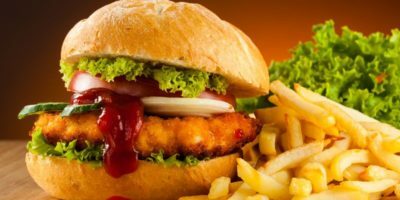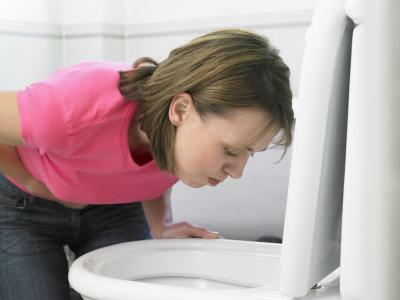1 Development of the disease
The development of cholelithiasis proceeds in 3 stages. In the first two stages, there are no symptoms. They appear only when calculous cholecystitis develops. The attack proceeds quite hard. Lack of proper care can lead to complications and even death of a sick person. The main manifestation of the attack is hepatic( bilious) colic.
Do you have gastritis?
GALINA SAVINA: "How easy is it to cure gastritis at home for 1 month. A proven method - write down a recipe. ..!"Read more & gt; & gt;
This is a pain syndrome. It arises suddenly against the background of a normal state. The pain is acute, it is felt in the area of the right hypochondrium or epigastric zone. The nature of pain and its intensity are different. It can be stitching, cutting. The symptom can last several hours, which causes the patient great discomfort.
After 1-2 hours, the pain is felt in the projection of the gallbladder on the abdominal wall. Irradiation often occurs in the back, the right shoulder blade or shoulder. Pain can also be delivered to the neck. In some patients, the pain syndrome is felt in the region of the heart. It can easily be confused with an attack of angina pectoris. In the event that the attack lasts more than 6 hours, you can suspect acute cholecystitis.
Colic is a symptom of both acute and chronic inflammation of the gallbladder in the acute stage. In 70% of patients after the first attack, the second develops. In the period between the appearance of symptoms a person feels well. The peculiarity of pain in biliary colic is its growth in the first hour. Then the pain syndrome becomes permanent.

Recommended to read
- Intestinal colic: symptoms and treatment
- Symptoms of renal colic
- Symptoms of biliary colic
- Effective remedy for gastritis and stomach ulcer
In most cases, signs of illness during an attack appear at night. Strengthening of the pain syndrome is observed in the supine position on the left side and with the inhalation of air. Such patients often take a forced posture( lying on the right side with tightened lower limbs).
2 Mechanism of the appearance of colic
The appearance of pain during an attack of cholelithiasis is caused by the following factors:
- by irritation of the organ or its bile duct with a stone;
- by stretching the wall of the bladder;
- increased pressure in the cavity of the organ;
- muscle spasm.

Endocrine factors play an important role. Against the background of cholelithiasis, the production of noradrenaline and serotonin is disrupted. The latter is responsible for the pain threshold. Its lack reduces the threshold of pain, which negatively affects the condition of the sick person. Norepinephrine acts in the opposite direction. It activates the antinociceptive( anesthetic) system of the body.
-
 IMPORTANT TO KNOW! Gastritis? Ulcer? To have a stomach ulcer not turned into cancer, drink a glass. ..Read the article & gt; & gt;
IMPORTANT TO KNOW! Gastritis? Ulcer? To have a stomach ulcer not turned into cancer, drink a glass. ..Read the article & gt; & gt;
The presence of stones in the gallbladder leads to a stretching of the membrane. This organ consists of several membranes, one of which is muscular. Stimulation of specific receptors leads to muscle spasm. Reduction is due to active entry into muscle cells of calcium ions. This process takes place with the participation of various neurotransmitters( acetylcholine, norepinephrine, serotonin, cholecystokinin).
The seizure itself occurs when there are provoking factors. Very often colic occurs with errors in nutrition. Provoke an attack can the use of fatty foods( meat, mayonnaise, butter, lard, fried potatoes), spices, smoked products. Perhaps the development of biliary colic on the background of stress, various infections, the reception of alcoholic beverages and when working with the torso bend.

3 Other symptoms of
An attack of cholelithiasis can manifest itself with the following symptoms:
- nausea;
- with vomiting;
- bloating;
- by tension of abdominal muscles;
- increased body temperature;
- chills;
- jaundice;
- is a violation of consciousness;
- drop in blood pressure.
-
 Gastroenterologist. IMPORTANT: "I beg you, if you began to worry about abdominal pain, heartburn, nausea, do not in any way do gases. .."Read more & gt; & gt;
Gastroenterologist. IMPORTANT: "I beg you, if you began to worry about abdominal pain, heartburn, nausea, do not in any way do gases. .."Read more & gt; & gt;

During an attack, the pain is almost always combined with nausea.
In severe cases, vomiting develops, which does not improve a person's condition. Perhaps a bitter taste in the mouth. A constant sign of cholelithiasis is jaundice. It is caused by stagnation of bile and an increase in the level of bilirubin in the blood. In such people, the skin acquires a yellowish hue.
Possible yellowing of the sclera. In case of a blockage of the common bile duct, jaundice is very pronounced. It is often observed discoloration of feces and darkening of urine. Other symptoms of cholelithiasis include unsteadiness of the stool. The temperature rarely exceeds 38ºC.
Severe fever and chills during an attack indicate the attachment of a secondary infection and the development of purulent processes. In this situation, urgent hospitalization is required. Objective signs of an attack of cholelithiasis include abdominal tenderness, an increase in the liver, the presence of positive symptoms of Ortner, Kera, Murphy and Mussie. The Ortner symptom is positive on the right.
For its definition by an edge of a palm it is necessary to beat on the bottom costal arches on the right and at the left. If there is pain, then the symptom is positive. Gallstone disease can lead to the following complications:
TIP FROM THE MAIN GASTROENTEROLOGIST
Korotov SV: "I can recommend only one remedy for the rapid treatment of Ulcer and Gastritis, which is now recommended by the Ministry of Health. .." Read testimonials & gt; & gt;
- inflammation of the bile duct( cholangitis);
- empyema( pus accumulation) of the gallbladder;
- hydrocephalus;
- perforation of the wall of the organ by a stone;
- peritonitis;
- secondary pancreatitis;
- cirrhosis of the liver.
In case of an acute attack of cholelithiasis, hospitalization is required. The patient is placed on his right side and calmed down. Spasmolytics and NSAIDs are used. In a hospital, a survey is conducted.
If necessary, antibiotics are prescribed and detoxification therapy is organized. According to the indications, an operation is performed. Thus, the main symptom of cholelithiasis during an exacerbation is intense paroxysmal pain.
- 1 Development of the disease
- 2 Mechanism of the appearance of colic
- 3 Other signs of illness
If a person develops an attack of cholelithiasis, the symptoms will be quite specific. They are represented mainly by pain. Gallstone disease is a very common disease. With it, stones are formed in the cavity of the gallbladder and the outflow ducts. The causes of the disease are a violation of cholesterol metabolism, inappropriate nutrition, obesity, diseases of the digestive system.



